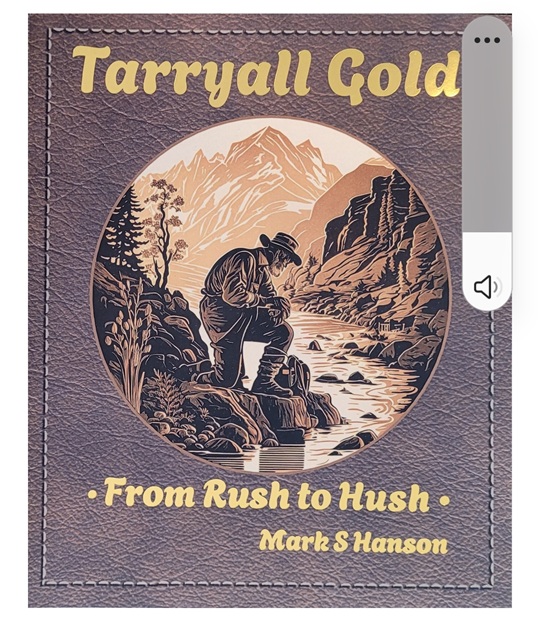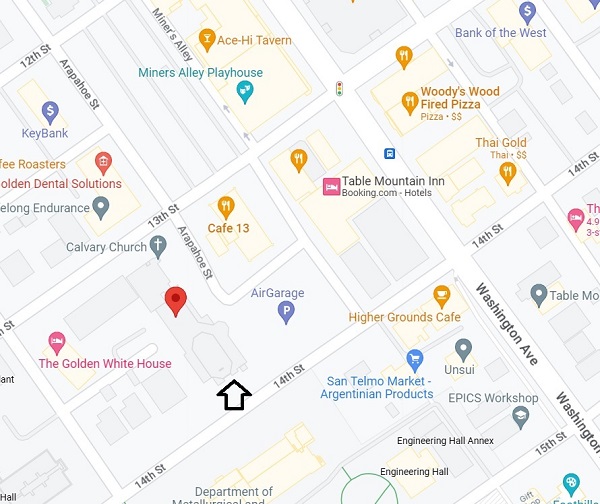Future Colorado Scientific Society Meetings
We normally hold monthly meetings from September through May.
Our meetings are both in-person and virtual.
Meetings are normally on the third Thursday of the month.
All are welcome – no admission charge
Join us at in-person after 6:30 pm for social time before the meeting
Join Zoom meetings after 6:45
Meeting and Program begin at 7:00
Past Presidents’ Dinner
Tarryall Valley: Gold, Glaciers, and Giants
Thursday, September 18, 2025
Mark Hanson
At Mount Vernon Country Club, in the Aspen Room

Mark Hanson is a geologist, historian, and author of the upcoming book Tarryall Gold: From Rush to Hush. He profiles the miners, mines, cabins, and their resulting patina on today’s Tarryall Valley. A resident and owner of several patented gold claims, Mark peels back 160 years of rust and reforestation to reveal a time capsule showcasing yesterday’s rush, and today’s hush.
CSS October Meeting – Details to come
Thursday, October 16, 2025
Joel Gratz, Open Snow
Open Snow is a weather forecasting and snow conditions information service.
In-person Meeting at Golden Calvary Church
All are welcome – no admission charge
6:30 pm – Social time begins at Golden Calvary Episcopal Church. Enter off 14th St.
6:45 pm – Join Zoom meeting, if attending remotely
7:00 PM – Meeting starts.
Please arrive early. Church doors are locked, and no one will be at the door to let you in after 7:00 pm.

1320 Arapahoe St, Golden, CO 80401
Click on link to open a Google map.
Enter off 14th St., going in via the main glass doors on 14th St.
Do not enter the old church above 13th St.
Go through building following the CSS signs to the Community Rooms 1 and 2, where we meet.
The church doors must stay locked, and we will have a person to let you in at the doors off 14th st.
They want to see the presentation too, so please arrive before 7:00 pm.
There will be a phone number that you can text to be let in if you arrive late.
Parking
On street parking is available close by, west of Washington Ave in downtown Golden.
The AirGarage parking structure, which can be entered from Arapahoe St., is $3.00 for three hours.
Copies of The Geology of Boulder County by Raymond Bridge (2004) will be available for $20.
CSS November Meeting – Posters and Lightning Talks by Early Career and Student Earth Scientists
Thursday, November 20, 2025
CSS December Potluck, Business Meeting, and 2025 President’s Address
Whiskeytown boulder sampling to elucidate wildfire history and role in debris flows using luminescence
Tuesday, December 2, 2025
Shannon Mahan, U. S. Geological Survey
At New Terrain Brewing Company, Golden, CO
Please pay your CSS dues for 2025!

Membership dues paid in November and December also apply to the following year.
You may pay dues online, or print out a PDF of the membership form and mail it to us with a check. Continuing your membership in CSS will enable us to continue all our ongoing programs, including our field trips, virtual meetings, Student Research Grants, and more.
See Membership and Donations for our online membership payment form and the CSS Membership printable PDF.
Regular Membership – $25;
Student Membership – (any level) $5;
Life Membership – $395.
Send your membership payment, if not done through our online membership payment form, to Colorado Scientific Society P.O. Box 150495 Lakewood, CO 80215-0495.
Thank you!
Meetings are normally on the third Thursday of the month.
All are welcome – no admission charge
Join us at in-person after 6:30 pm for social time before the meeting
Join Zoom meetings after 6:45
Meeting and Program begin at 7:00
See Archives of CSS Talks – Indexed (under Events) for previous Colorado Scientific Society Talks, or just follow the link.
=
Calvary Episcopal Church in Golden – Details and Map
Golden Calvary Church,
Enter off 14th St. See arrow on Map
Click on link to open a Google map.

Calvary Church Golden
Click on link to open a Google map.
Enter from 14th St., go in by the main glass doors at [906] 14th St.
Do not enter via the old church above 13th St.
From the 14th Street entrance go down the hallway following Colo Sci Soc signs to Community Rooms 1 and 2, where we meet.
The church doors must stay locked, and we will have a person to let you in at the doors off 14th st.
They want to see the presentation too, so please arrive before 7:00 pm.
There will be a phone number that you can text to be let in if you arrive late.
Parking
On street parking is usually available close by, along 14th St and west of Washington Ave in Golden.
The AirGarage parking structure, which can be entered from Arapahoe St., is $3.00 for three hours.

